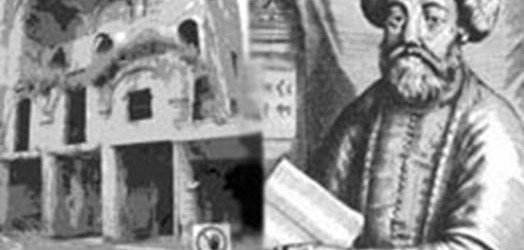Sabetai Zvi[1] (1626-1676) was a Jewish ecclesiastic and Kabbalist who was born in Smyrna (İzmir) as an Ottoman Jew.[2] Zvi later enunciated himself as the long-awaited Jewish Messiah, became the founder of the Jewish-Sabetaist movement and inspired the founding of a number of other similar sects.[3] Zvi’s huge influence on the Ottoman and even on European Jews created some social problems[4] and with all its religious tolerance[5] the Ottoman State forced him and his community to convert into Islam on 16 September 1666 by the decision of Imperial Council (Divan) headed by Sultan Mehmed IV.[6] Zvi took the name of “Aziz Mehmet Efendi” and with his community he lived pretending to be a Muslim.[7] The followers of Sabetai Zvi are called Dönme, Avdeti or Sazanikos.[8]
In Ottoman official records, Sabetaists are accepted as Muslims but in fact until the 20thcentury Sabetaists kept their unique identity and continued to make intermarriages.[9] According to Galante, some Ottoman cities especially Salonika persisted to be Jewish-Sabetaist dominated city and after the loss of this city Sabetaist families returned to Turkish territory via migration and population exchange (mübadele) between Turkey and Greece.[10] Starting from 20th century, especially after the foundation of the Republic of Turkey, Sabetaist identity was weakened with new modern identities and norms. However, questions around converted Jews have always existed and it became an assault mechanism for Islamists after the Kemalist Revolution and the foundation of secular Republic.[11]
Sabetaism debate has become one of the most popular and controversial topic in Turkish intellectual life in the last decade although it was only a matter of interest for Islamists two decades ago. Sabetaism discussions gained widespread popularity after Yalçın Küçük and Soner Yalçın’s books, two controversial but popular names from leftist-socialist tradition. Yalçın Küçük in his books Tekeliyet 1-2, Şebeke – Network and Caligula Saralı Cumhur talks about a hegemonic class of Sabetaist families in Turkey who are able to occupy all important positions in economic, political and cultural life. Soner Yalçın’s best-seller books Efendi and Efendi 2 also contributed much to the spread of debates on Sabetaism. In his popular books, Yalçın tried to show how people from Jewish-Sabetaist background (he called them “White Turks – Beyaz Türkler”) and Sabetaist families’ sons-in-law (including former Prime Minister Adnan Menderes and Foreign Minister Fatin Rüştü Zorlu) came to critical positions in the country. Unfortunately, as Sabetaism discussions had become popular, this search of mystery and family roots turned into conspiracy theories and a witch-hunt and people having Sabetaist background were labeled as “powerful born (iktidar doğanlar)”.[12] As it was stated by Cengiz Şişman, many prestigious people in Turkey became victims of this madness.[13]
Dr. Ozan ÖRMECİ
REFERENCES
[1] Sabetay Sevi in Turkish. For a detailed research on Zvi see; John Freely. 2002. Kayıp Mesih Sabetay Sevi’nin İzini Sürerken. İstanbul: Remzi Kitabevi.
[2] Cengiz Şişman. 2008. Sabatay Sevi ve Sabataycılar: Mitler ve Gerçekler. Ankara: Aşina Kitaplar, p. 26.
[3] ibid., pp. 26-30
[4] According to Şişman, although Zvi’s movement did not create social explosions, it disturbed some segments of the Ottoman Jewish community. For instance, İzmir’s chief rabbi Haim Benveniste complained about the division among the Jewish community among Zvi supporters and opposites. The division among Jewish community was a problem for Ottoman Palace that was implementing a proto “millet system” in these years in order to control the Ottoman society. See; Cengiz Şişman, Sabatay Sevi ve Sabataycılar: Mitler ve Gerçekler, pp. 45-47. Moreover, Zvi’s influence was even greater than his homeland in Europe since the emergence of a Jewish messiah meant the rise of an antichrist according to Christian belief. It must be also noted that the year that Zvi became famous in Europe -1666- (666 is accepted as the symbol of devil in Christianity) also increased European Jews and Christians’ curiosity about him and many Europeans came to Ottoman lands in order to see Zvi. See; Cengiz Şişman, Sabatay Sevi ve Sabataycılar: Mitler ve Gerçekler, pp. 36-37.
[5] Freely also considered Ottoman State’s approach to Zvi relatively tolerant. See; John Freely,Kayıp Mesih Sabetay Sevi’nin İzini Sürerken, p. 141.
[6] İlber Ortaylı, “Ottoman Modernisation and Sabetaism” in Tord Olsson, Elisabeth Özdalga and Catharina Randvere (ed.) Alevi Identity. Istanbul: The Economic and Social History Foundation of Turkey, p. 97.
[7] Cengiz Şişman, Sabatay Sevi ve Sabataycılar: Mitler ve Gerçekler, pp. 46-56.
[8] A type of fish that changes its color in accordance with the environment, a term blaming Sabetaists for pretending to act like a Muslim although they are not. See; İlber Ortaylı, “Ottoman Modernisation and Sabetaism”, p. 97.
[9] İlber Ortaylı, “Ottoman Modernisation and Sabetaism”, p. 98.
[10] Abraham Galante. 2000. Sabetay Sevi ve Sabetaycıların Gelenekleri. İstanbul: Zvi-Geyik Yayınları, p. 108.
[11] For a typical Islamist reaction see; Mehmet Şevket Eygi. 2000. Yahudi Türkler Yahut Sabetaycılar: İki Kimlikli, Gizli, Esrarlı ve Çok Güçlü Bir Cemaat”. İstanbul: ZVI-Geyik Yayınları.
[12] See; Tayfun Er. 2007. Erguvaniler Türkiye’de İktidar Doğanlar. İzmir: Duvar Yayınları.
[13] Cengiz Şişman, Sabatay Sevi ve Sabataycılar: Mitler ve Gerçekler, p. 16.




















































